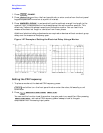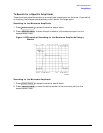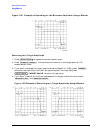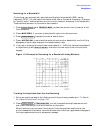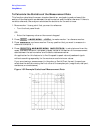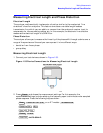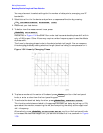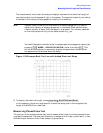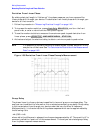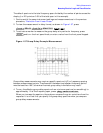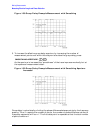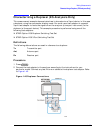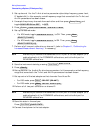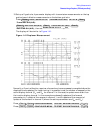
1-46
Making Measurements
Measuring Electrical Length and Phase Distortion
Deviation From Linear Phase
By adding electrical length to “flatten out” the phase response, you have removed the
linear phase shift through your device. The deviation from linear phase shift through your
device is all that remains.
1. Follow the procedure in "Measuring Electrical Length" on page 1-43.
2. To increase the scale resolution, press and turn the front
panel knob, or enter a value from the front panel keypad.
3. To use the marker statistics to measure the maximum peak-to-peak deviation from
linear phase, press .
4. Activate and adjust the electrical delay to obtain a minimum peak-to-peak value.
NOTE It is possible to use delta markers to measure peak-to-peak deviation in only
one portion of the trace. See "To Calculate the Statistics of the Measurement
Data" on page 1-42.
Figure 1-36 Deviation From Linear Phase Example Measurement
Group Delay
The phase linearity of many devices is specified in terms of group or envelope delay. The
analyzer can translate this information into a related parameter, group delay. Group delay
is the transmission time through your device under test as a function of frequency.
Mathematically, it is the derivative of the phase response which can be approximated by
the following ratio:
−∆Φ /(360 × ∆Φ)
where ∆Φ is the difference in phase at two frequencies separated by ∆F. The quantity ∆F is
commonly called the “aperture” of the measurement. The analyzer calculates group delay
from its phase response measurements.
Scale Ref
SCALE DIV
Marker Fctn
MKR MODE MENU
STATS ON



